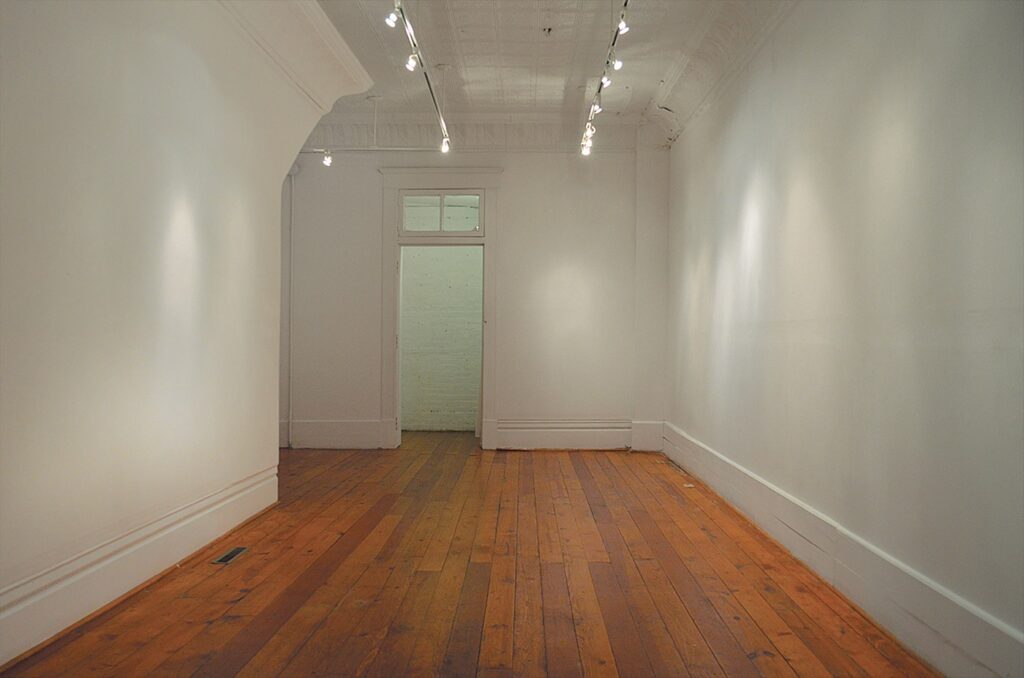
Book Review by Daniel Brown –
Institute 193 is an important non-profit exhibition and performance space in Lexington, Kentucky. Founder Phillip March Jones saw an empty space in a less developed part of the city in 2009, and understood that the kind of gallery he had in mind could make a huge impact on Lexington’s burgeoning contemporary arts scene. He hired Chase Martin to be director (Martin has since moved to Chicago), but some of the best exhibitions, with excellent accompanying text, were recently made into a book, Institute193: Volume One. The book, over-scaled but not quite “coffee table” in dimension, is a superior look at the Institute’s history to date, and also a piece of the general philosophy of the gallery, which emphasizes documentation and enhances the gallery’s presence in the Lexington community. The book also allows non-Lexingtonians a wonderful look at the so-called New South’s visual artists.
Featuring the work of 18 artists, all of whom have exhibited at the space, several themes emerge and dominate both the exhibition history itself, and the underlying philosophies of founder and director. The philosophies mesh with what one reads in most contemporary art magazines, and text surrounding international art fairs, and art mainly shown in non-profits, as opposed to commercial galleries, which represent a completely different world from that of Institute 193. The Institute seems very keen on showing what used to be known as “outsider art”, which they dismiss as an irrelevant and self-limiting category, in favor of a more holistic, inclusive group of artists, some of whom once would have been marginalized as schizophrenic, unprofessional, outside the mainstream. While this goal is a noble one,the selection of artists occasionally slips into the celebration of victimhood, the art veering towards urban anthropology and sociology as well as the aesthetic. Another major strain that runs through these exhibitions is an emphasis on non-traditional materials that most of the artists use, particularly materials from daily life, from the throwaway to the forgotten. Much of contemporary art celebrates the use of such non-traditional materials and media, and Institute 193 represents an outstanding example of this strain in the art of today. Concurrently, I think that the use of such materials links these contemporary artists with the long tradition of Kentucky crafts, thus allowing visitors and viewers to these exhibitions an ability to see contemporary art in the context of much of Kentucky visual history.
As in much contemporary art most of the artists in the book are dealing with, and/or interpreting, individual identity in a period of rapid change, new technological tools, and a rather surprisingly, nearly non-existent sense of sexuality or of the erotic. There’s a heavy emphasis on the influence of comic books, photography, and, most intriguingly an aesthetic delight in what we might call the Neo-Baroque, as in the work of Charles Williams, Marvin Francis and the wildly gifted Robert Morgan. Morgan “who began his career as a scavenger” borrows the iconography of Hindu gods and goddesses to symbolize the young men who have died of AIDS, and when his symbols become metaphors, his mixed media sculptures are some of the strongest art around.
[SlideDeck2 id=2637]
Work by Mare Vaccaro, which are digital prints, manifest an artist who has whole body alopecia, is also among the strongest, not only in the book, but of contemporary art in general. Using herself as a model, she borrows materials from classic western art history, adding just dollops of makeup in what become boldly iconic, and nearly religious icons. Because of her condition, a quick look at the work might indicate that the model could be either male or female, making her work a brilliant part of the analysis of gender.
[SlideDeck2 id=2647]
Although the use of photography is common and almost pandemic, I found some of the photographic work the least effective, perhaps because of its ubiquity. If there is one critique to make in general, it would be the use of so much work by people of similar age, and thus of similar sensibility, that the range of work seems limited by its own philosophies, and by attempting to place the Institute itself within the context of cutting edge contemporary art. The introductory essay by Lilly Lampe may do more harm than good to the real vision of the curator/director of the institute. But, to quote Lampe’s last line, this book does prove that “Institute 193 proves that groundbreaking contemporary art can be created and sustained anywhere”.




